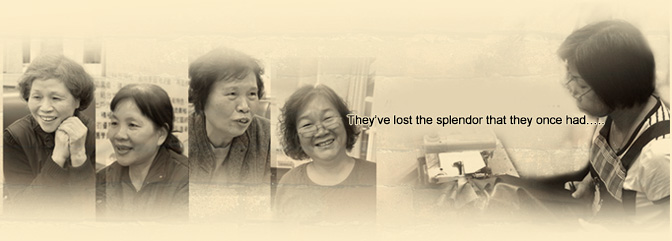Sewing Workshops
Origin
Thanks to the strenuous efforts of the forefathers, the industrial development of Taiwan, after the restoration period, has developed gradually from agriculture to daily necessities such as textile, food processing, hand tools and other light industries. The finished products of light industry is characterized by light weight, high utility in daily life and low technical difficulty, which explains why so many small factories that produce light machines and tools as well as small equipment mushroomed in the entire Taiwan. Meanwhile, as more labor is needed during product manufacturing in order to perform simple function of the small equipment, yet the space of the factories were usually small which was incapable of accommodating such a great number of labor, many business owners outsourced part of the manufacturing procedure, and the housewives stationed at home became the best technical labor for outsourcing.
At that time, the women did housework early in the morning, saw the entire family members off, and took bags and bags of materials soon after, sitting together in a group, gathering in the living room and chatting, assembled various spare parts in an fast manner to earn money for the family, or even pushed the cradles of babies with the foot in the meantime. After the kids came back home from school and finished homework, they joined the family handwork. The scene that “a living room is a factory” for each family is well impressed with the old Taiwanese, and they feel rather exultant the moment such scene is mentioned. As what the proprietress of the first workshop said, the money the women earned at that time in the living room was even more than that made by their husbands from outside. The hardworking Taiwanese not only make “Made in Taiwan” famous, but also push Taiwan among the Four Tigers in Asia, and even create the prosperous scene of “money flood in Taiwan”.
While strolling in the street of Luzhou, we find that such small factories still exist alongside the lanes and alleys, generating the sound of “Kedang, Kedang” from the operating machines. A busy scene is made under the dim light, and the narrow space is filled with stocks of finished products. With the shift of economic transformation and industrial gravity center, and the relocation of the industry due to change of time, the small factories today are no longer commonly seen everywhere, on the contrary, they are hidden in the lanes and alleys, just like the lost things that only exist in our memories.
To arouse the emotions of children of this generation over the sweet past experienced by the old generations, we have decided to start from the sewing workshops near our school, delineate the industrial rise and fall, and the past history according to the clue of time, and illustrate the laughter and bitterness behind the industry based on the dialogue with the interviewees. |
